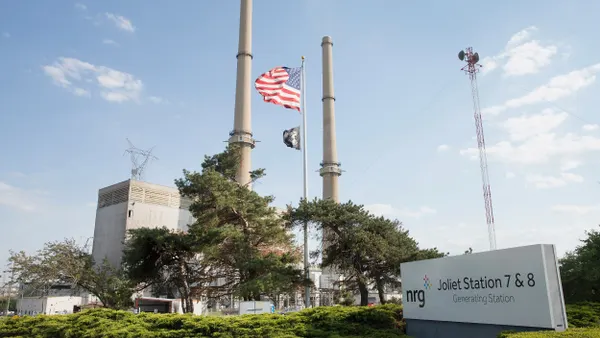Dive Brief:
-
If FirstEnergy buys the 1,300-MW coal-fired Pleasants power plant in West Virginia as state lawmakers want, the company would likely retire one of its two other coal plants in the state, a FirstEnergy official said Friday during an earnings conference call.
-
“We don’t see it as a viable option for Mon Power to operate three coal-fired power plants in West Virginia,” said Jon Taylor, FirstEnergy chief financial officer. “We will continue to work through the process with the [West Virginia Public Service Commission] and strive for an outcome that best serves our customers, communities and employees in West Virginia.”
-
FirstEnergy expects its earnings per share to grow by 6% to 8% a year, it said in its first-quarter results. That’s despite a declining contribution from its stake in Signal Peak, a coal mining company in Montana, according to John Somerhalder II, board chair and interim president and CEO. First Energy expects Signal Peak will account for less than 15% of the company’s earnings this year and less than 10% in 2024 and 2025.
Dive Insight:
At the direction of state regulators, FirstEnergy is considering buying the Pleasants power plant from Energy Transition and Environmental Management, which leases the plant to its former owner, Energy Harbor.
The PSC in late April approved a FirstEnergy proposal to charge its customers about $3 million a month for a year to maintain the Pleasants power plant while it studies its options. The plant is set to retire at the end of this month.
The concept of a potential acquisition of Pleasants was suggested by stakeholders as a replacement for the 1,110-MW, coal-fired Fort Martin station, which has a proposed end-of-life date in 2035, according to Taylor.
The Pleasants plant is newer than the Fort Martin plant and has enhanced pollution control equipment so it makes sense to consider buying the Pleasants plant to replace the Forth Martin generating station, Somerhalder said.
FirstEnergy expects its growing utility ratebase will make up for declining income from Signal Peak.
“We expect significant growth from our regulated operations given current returns in our distribution companies and our customer-focused investment strategies across both distribution and transmission, which will more than offset the decline in Signal Peak,” Somerhalder said.
Meanwhile, FirstEnergy’s income increased in the quarter to $292 million, or 51 cents/share, from $288 million, or 51 cents/share, in the same period last year. Revenue climbed to $3.2 billion from $3 billion.
FirstEnergy’s first quarter operating expenses grew 10.3% to $2.68 billion in the quarter from $2.43 billion a year ago, with purchased power costs jumping 28.5% to $1.12 billion from $875 million.
With a record-setting warm winter, FirstEnergy electricity sales fell 5.3% in the first quarter to 36.1 million MWh compared to the year-ago quarter, according to a presentation to analysts. The drop in sales reduced earnings by 12 cents/share.
However, weather-adjusted sales, a measure that aims to eliminate the variability of weather, increased 2.3%, driven by a jump in residential sales, FirstEnergy said.
FirstEnergy Q1 weather-adjusted sales jump 2.3%
FirstEnergy is cutting costs to offset the reduced revenue from the mild weather, according to Taylor. The Akron, Ohio-based company last month ended its naming rights for the stadium where the Cleveland Browns football team plays, is consolidating real estate and is being “very selective” in filling empty job positions, especially for nonunion employees, Taylor said. FirstEnergy is also looking for ways to lower its borrowing costs, he said.
FirstEnergy is seeking state permission to consolidate its four Pennsylvania utilities and is considering doing the same in Ohio, he said.
Looking ahead, Brian Tierney, FirstEnergy’s incoming president and CEO, is committed to continuing with the company’s strategic plan, which includes a focus on its regulated utility operations, according to Somerhalder.
Tierney, senior managing director at private equity firm Blackstone, will join FirstEnergy on June 1. He previously was executive vice president of strategy at American Electric Power.















